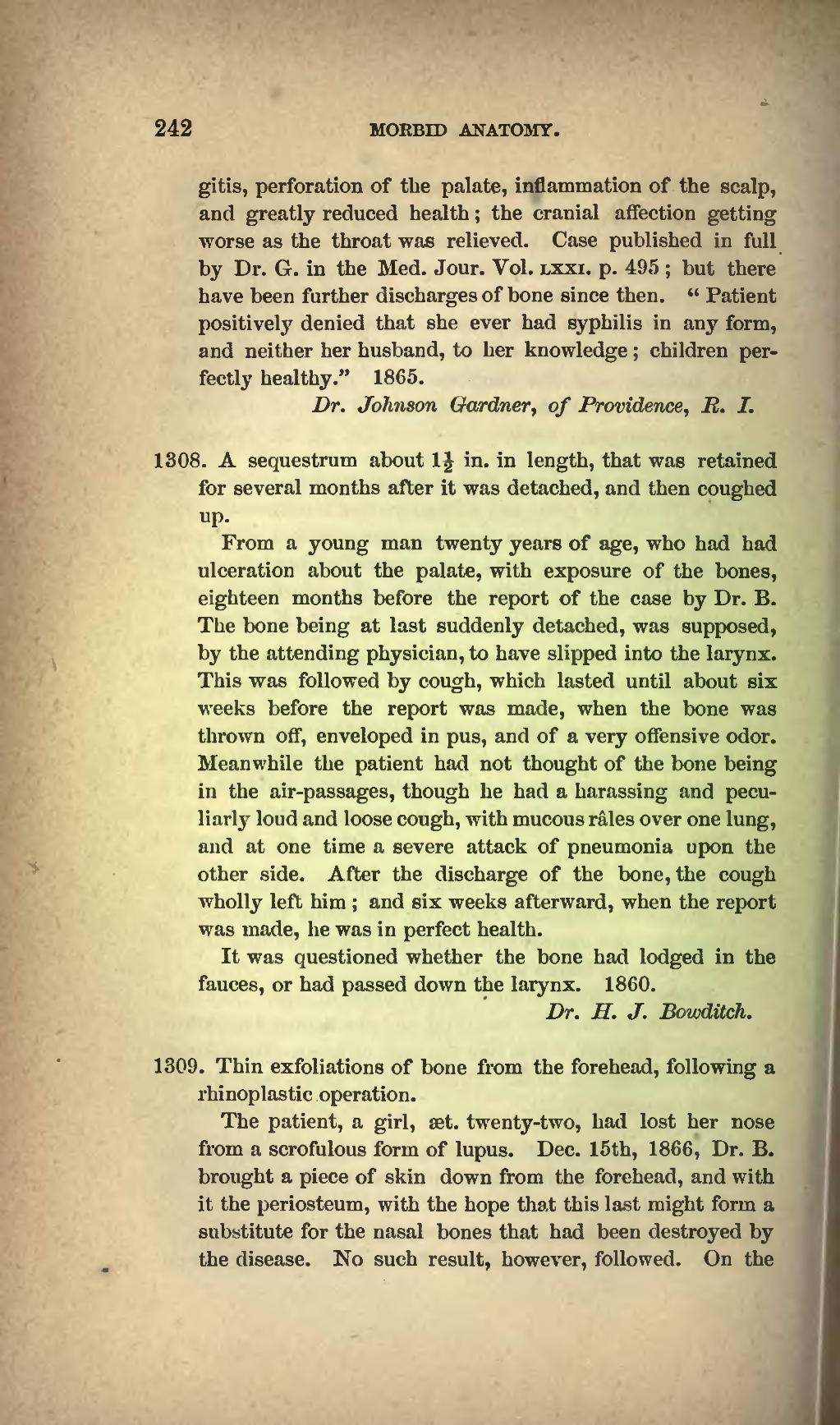242 MORBID ANATOMY.
gitis, perforation of the palate, inflammation of the scalp, and greatly reduced health ; the cranial affection getting worse as the throat was relieved. Case published in full by Dr. G. in the Med. Jour. Vol. LXXI. p. 495 ; but there have been further discharges of bone since then. " Patient positively denied that she ever had syphilis in any form, and neither her husband, to her knowledge ; children per- fectly healthy." 1865.
Dr. Johnson Gardner, of Providence, R. I.
1308. A sequestrum about 1 in. in length, that was retained for several months after it was detached, and then coughed up.
From a young man twenty years of age, who had had ulceration about the palate, with exposure of the bones, eighteen months before the report of the case by Dr. B. The bone being at last suddenly detached, was supposed, by the attending physician, to have slipped into the larynx. This was followed by cough, which lasted until about six weeks before the report was made, when the bone was thrown off, enveloped in pus, and of a very offensive odor. Meanwhile the patient had not thought of the bone being in the air-passages, though he had a harassing and pecu- liar^ loud and loose cough, with mucous rales over one lung, and at one time a severe attack of pneumonia upon the other side. After the discharge of the bone, the cough wholly left him ; and six weeks afterward, when the report was made, he was in perfect health.
It was questioned whether the bone had lodged in the fauces, or had passed down the larynx. 1860.
Dr. H. J. Bowditch.
1309. Thin exfoliations of bone from the forehead, following a rhinoplastic operation.
The patient, a girl, set. twenty-two, had lost her nose from a scrofulous form of lupus. Dec. 15th, 1866, Dr. B. brought a piece of skin down from the forehead, and with it the periosteum, with the hope that this last might form a substitute for the nasal bones that had been destroyed by the disease. No such result, however, followed. On the
�� �
